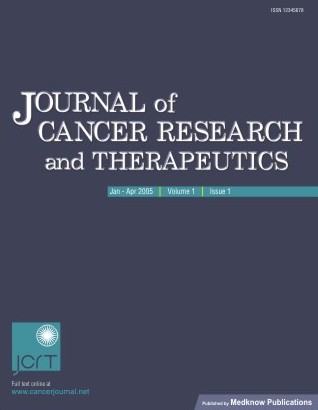
|
Journal of Cancer Research and Therapeutics
Medknow Publications on behalf of the Association of Radiation Oncologists of India (AROI)
ISSN: 0973-1482 EISSN: 1998-4138
Vol. 4, Num. 2, 2008, pp. 53-53
|
Journal of Cancer Research and Therapeutics, Vol. 4, No. 2, April-June, 2008, pp. 53
Editorial
Dilemmas of Plenty
Huilgol NagrajG
Department of Radiation Oncology, Dr. Balabhai Nanavati Hospital, S.V. Rd, Vile Parle (West), Mumbai - 400 056, Maharashtra
Correspondence Address:Department of Radiation Oncology, Dr. Balabhai Nanavati Hospital, S.V. Rd, Vile Parle (West), Mumbai - 400 056, Maharashtra, nagrajhuilgol@gmail.com
Code Number: cr08015
There is a surfeit of technologies available to both patients and radiation oncologists. The last decade has witnessed a global explosion of technology with Intensity modulated radiotherapy (IMRT), Intensity guided radiotherapy (IGRT), tomotherapy, cyberknife, gyroknife, and telecobalt machine with MRI for image guidance is on the designer′s board. There are choices galore!
But are we making informed decisions on either while procuring the equipment or when recommending any form of treatment, be it proton therapy or IMRT with cyberknife?
It would be instructive to dwell in the past to understand the growth of technology in radiation therapy. The discovery of ionizing radiation soon led to its implementation as a therapeutic tool. Ionizing radiation was initially used for depilation, treatment of tuberculosis, tinea capitis, keloid, and as a tonic.
All this was done with purported benefits of radiation. Randomised clinical trials (RCTs) were not the order of the day. It was soon evident that it was a folly to treat diseases such as tuberculosis and tinea capitis. Clumsy X-ray machines, which could only treat tumors in the shallow caprices, made way to megavoltage telecobalt machines, besides 4 and 6 MV accelerators. This innovation in technology fulfilled an unmet need for the capacity to treat deep-seated tumors. Thus, linear accelerators offered added depth-dose advantage, besides better penumbra. Electrons were an added advantage. These innovations were accepted without randomized trials. But that is only a half truth. The rigor of RCTs, as an important requirement of rational practice, has been consolidated over the last one decade, that is, much after all these technologies discussed above become part of the clinical practice. Hence, should we insist on randomized trials before recommending any of the newer techniques?
RCTs may not be the only way to establish truth in medicine. Introduction of blood transfusion, penicillin, and coronary angioplasty has become part of medical lore, without RCTs. RCTs may not be always possible or necessary. It may not be necessary to test a parachute in an RCT with or without a parachute, but it would be worthwhile running a comparative study or trial between two different types of parachutes.
Practice of medicine is increasingly ensnared in structured, guideline-based therapeutics. The pressure to do so is evermore increasing due to insurance pressure from agencies and bureaucratic controls. Yet, nearly 60-70% of physicians practice off label prescriptions and implement practices outside the guideline. Should one consider them all as guilty of malpractice? Neutrons appeared on the scene with a considerable promise. Radio-resistant and hypoxic tumors were expected to respond spectacularly. Neutrons quickly disappeared from the practice due to suboptimal depth-dose distribution and toxicities. Neutrons never underwent any head-to-head comparison with the prevailing technology and radiation therapy. Will proton therapy face a similar fate or the modern day advertising and hype will ensure the survival of this new technology?
Technology should not be implemented because it is feasible, but only when there is a tangible human benefit at a cost where most can benefit. It should also be the responsibility of manufacturers and practitioners to make unbiased information available to patients, much the same way pharmaceutical agencies are expected to have information inserts!
Preserving public confidence in medical practice is of paramount importance. Let not marketing newer technologies with a vigor of an ad man raise doubts about the integrity of the fraternity.
The need for randomized trial can be overemphasized, although other avenues of proof are equally vivid. The new technologies should be rigorously assessed before recommending as standard of care.
Copyright 2008 - Journal of Cancer Research and Therapeutics
|
